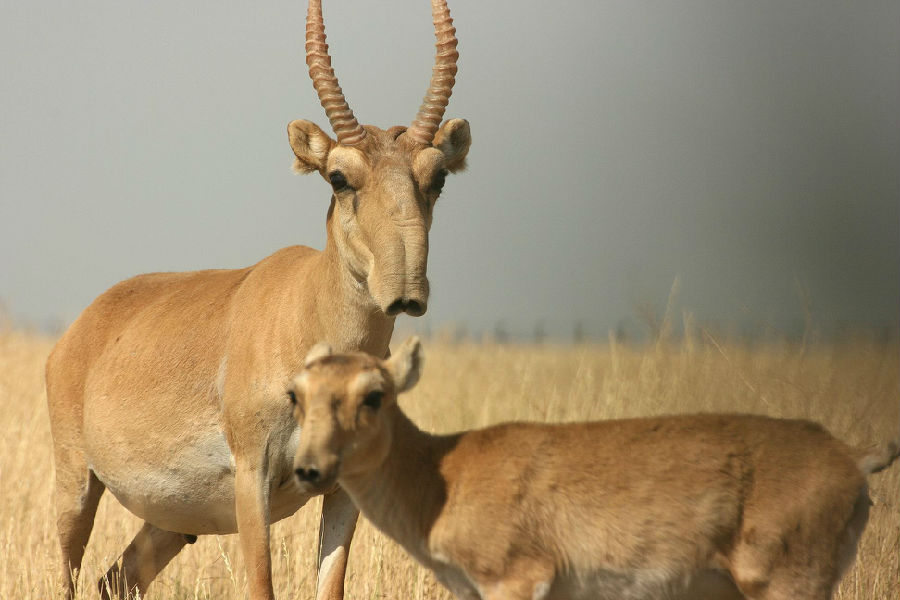(单词翻译:单击)
听力文本
The largest grassland on Earth, the vast Eurasian Steppe,
辽阔的欧亚草原区是地球上最大的草原地带,
stretches one third of the way around our planet.
覆盖距离达到地球周长的三分之一。
Spring rain has brought fresh grass, and with it, new life.
青草随春雨而生,也带来了新生命。
A relic from the Ice Age, a baby Saiga antelope, just three hours old.
一种冰川时代存活至今的生物,高鼻羚羊幼崽,出生才三小时。
His only company, his twin.
陪伴它的只有它的孪生兄弟。
Until they can stand, their mother has left them hidden in the grass.
在它们能站起来之前,母亲会将它们藏在草丛中。
They should be safe, as long as they remain quiet.
这样应该很安全,只要保持安静。

For these calves, the clock is already ticking.
对这两只小羊来说,时间紧迫。
Their herd will soon be moving on, seeking the freshest new grass.
羚羊群很快就要离开,去寻找最新鲜的草场。
Their lanky legs are a sure sign that they're built for a life on the move.
高鼻羚羊四肢瘦长,预示着它们一生都将奔波在路上。
Saiga always give birth to twins,
高鼻羚羊总会产下孪生幼崽
so their numbers grow rapidly just when grass is plentiful.
这样能够在草源充足时迅速繁衍。
Their bizarrely shaped nose can detect fresh growth from hundreds of miles away.
它们的鼻子长相奇怪,却能够勘测到几百公里外的青草长势。
The young twins will now begin the nomadic life they share with most animals on the world's open plains.
这两只小羊即将与其他草原动物一样,开始辽阔草原上不断迁徙的生活。
视频及简介
草原覆盖了所有土地的四分之一,支持着野生动物的大量聚集,但为了在这里生存,动物必须忍受地球上最恶劣的季节性变化。从亚洲怪异的西贡羚羊,到巴西的巨型食肉动物,草原动物已经以不同寻常的方式适应了这些极端。在被洪水淹没的奥卡万戈,狮子在史诗般的战斗中,在大草原上捕食一头令人生畏的水牛,捕食者利用大象来帮助捕捉昆虫,在寒冷的北部苔原上,驯鹿开始在饥饿的北极狼的阴影下进行大迁徙。


